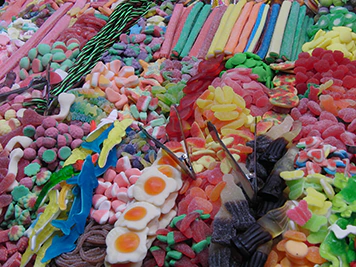| Essence |
Potassium Lactate or E326 is the potassium salt of lactic acid that presents itself as a clear, odorless, colorless typically liquid (but can also be created in the powder form) that can be used as a flavor enhancer, humectant, and for other applications in food. That said, this additive also has many non-food-related applications like being used in medicine, cosmetics, agriculture, gas and oil industry, as well as industrial cleaning. |
| Names |
Lactic acid potassium salt, Propanoic acid 2-hydroxy- potassium salt, 2-hydroxy propanoic acid potassium salt, Potassium 2-hydroxy propanoate, CAS 996-31-6, E326, Potassium Lactate, and others. |
| Sourcing |
Typically, Lactose but Glucose can also be used. |
| Manufacturing |
It basically undergoes the exact same first steps as Sodium Lactate (E325). The difference comes when Lactic Acid is created. Meaning, Lactic Acid is mixed with Potassium Hydroxide (instead of Sodium Carbonate or Sodium Hydroxide). This reaction produces Potassium Lactate and water which then undergoes concentration through either membrane filtration or evaporation (other methods are also possible) to improve purity and potency. |
| Application |
Preservative, humectant, flavor enhancer, and acidity regulator (pH regulator). It’s highly water-soluble. |
| Acceptable Daily Intake |
None determined. |
| Side Effects |
The only real way it can be harmful is due to overdosing on Potassium when very high amounts are consumed. Adverse effects can then manifest themselves as gastrointestinal issues (like diarrhea, vomiting, and nausea), hyperkalemia, or ill interactions with medications (like ACE inhibitors or Potassium-sparing diuretics). |
| Benefits |
Some potential health benefits might exist due to its Potassium contents. Healthy Potassium levels can contribute to proper nervous system function, blood pressure control, improved bone health, augmented muscle function, and other benefits. |
| Studies |
205+ studies on Pubmed. 55+ studies on safety. |
| Allergens |
None (the supposed milk particles in it don’t quite make it unconsumable for people with Dairy-related allergies). |
| Diet Restrictions |
It may or may not be vegan (essentially, that depends on the exact fermentation process used). It has no other diet restrictions. |
| Health Knight Assessment |
Fully Harmless. | Category 1 Additive. |
| Products |
Potassium Lactate (E326) can be found in processed foods like prepackaged chicken-related foods, Chinese noodles, all and every sausage imaginable, sweets and candy, hams, turkey-related products (typically roasted and breasts), meatballs, premade pasta, noodle and rice dishes, raw meat, lardons, deli meats, salmon steaks, burger meats, biscuits, meat-related snacks, corn dogs, smoked herrings, and more. |



